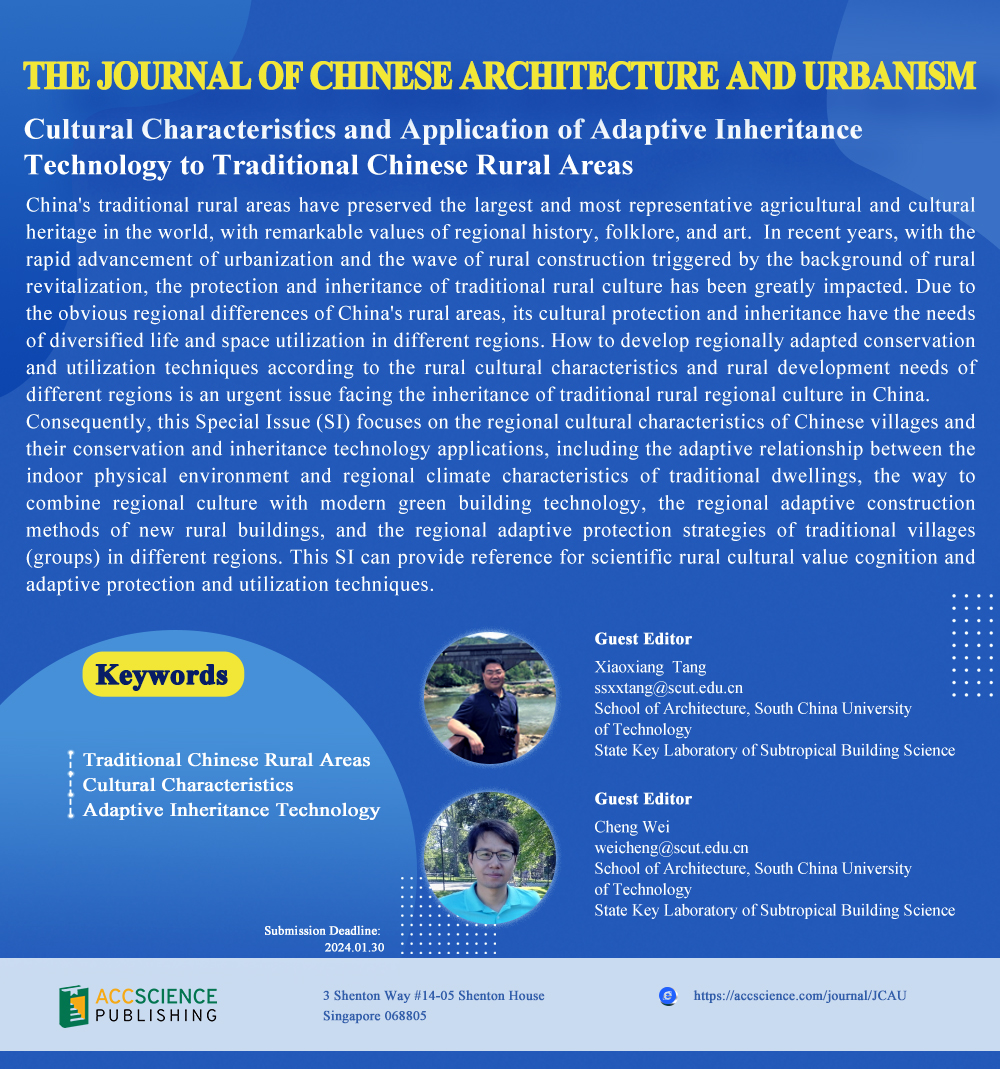Cultural Characteristics and Application of Adaptive Inheritance Technology to Traditional Chinese Rural Areas

China's traditional rural areas have preserved the largest and most representative agricultural and cultural heritage in the world, with remarkable values of regional history, folklore, and art. In recent years, with the rapid advancement of urbanization and the wave of rural construction triggered by the background of rural revitalization, the protection and inheritance of traditional rural culture has been greatly impacted. Due to the obvious regional differences of China's rural areas, its cultural protection and inheritance have the needs of diversified life and space utilization in different regions. How to develop regionally adapted conservation and utilization techniques according to the rural cultural characteristics and rural development needs of different regions is an urgent issue facing the inheritance of traditional rural regional culture in China.
Consequently, this Special Issue (SI) focuses on the regional cultural characteristics of Chinese villages and their conservation and inheritance technology applications, including the adaptive relationship between the indoor physical environment and regional climate characteristics of traditional dwellings, the way to combine regional culture with modern green building technology, the regional adaptive construction methods of new rural buildings, and the regional adaptive protection strategies of traditional villages (groups) in different regions. This SI can provide reference for scientific rural cultural value cognition and adaptive protection and utilization techniques.
Strategies for the dynamic protection and utilization of traditional villages in rapidly urbanizing areas: The case of Jiangbian Village in Dongguan City of China
Exploring the appropriate technology for green renovation of rural buildings incorporating regional culture: Taking the renovation of village houses in Conghua, Nanping, Guangzhou as an example
Indoor photothermal environment in traditional Miao dwellings in western Hunan province: Field measurements, data simulation, and mitigation strategies
Esthetic characteristics of Mount Jingfu’s “Grotto-Heavens and Blissful Lands” landscape based on the cultural and regional disposition theory
Cultural characteristics and application of adaptive inheritance technology to traditional Chinese rural areas
The architectural complex of modern Yiyang Garden in Guangzhou, China



